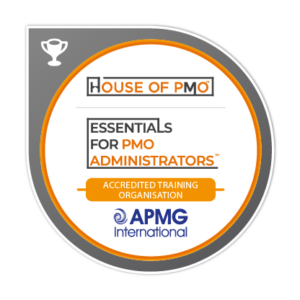
There have been many years of research into why projects fail.
McManus & Wood-Harper in 2008* with an IT project focus summarised that management causal factors account for 65% of the project failure rate, such as:
- Poor leadership in project delivery
- Poor stakeholder communication
- Poor competencies (and skill shortages)
- Poor stakeholder management
- Poor estimation methods
- Poor risk management
- Insufficient management support
And technical causal factors account for 35% of the project failure rate, including:
- Inappropriate and ill-defined software requirements
- Inappropriate technical designs
- Inappropriate development tools
- Inappropriate user documentation
- Poor test planning
- Poor technical support
Understanding the Sources of Information Systems Project Failure
There’s also growing research about why portfolios of projects also fail, including PMI’s regular Pulse of the Profession reports which recently highlighted that project portfolio performance is poor due to:
- Organizations fail to bridge the gap between strategy design and delivery.
- Executives don’t recognize that strategy is delivered through projects.
- The essential importance of project management as the driver of an organization’s strategy isn’t fully realized
PMI Pulse of the Profession 2018
The PMO: Gap Closer
Reading the report and the call to actions – one thing struck me – who in the organisation is responsible for ensuring the gaps get closed. Who is ultimately accountable? Who provides the expertise to carry out the actions? Who is there to make sure the many different cogs are aligned and turning?
It’s the PMO.
It’s a combination of different PMOs in a larger organisation – a Portfolio Office with Programme and Projects PMOs, maybe even a Centre of Excellence too. In a small organisation, it’s a central PMO that carries out key services in portfolio, programme and project support.
It’s an entity that can support that process of strategy implementation to project execution then continuous improvement and feeding back into strategy setting.
The only entity that exists today that can support that is the PMO.
Perhaps it’s not called a PMO – it can be called anything. It’s objective should be “support the business in choosing the right projects and programmes – then support those projects and programmes in doing things right.”
In the Root Causes of Project Execution Failures above, the PMO can provide services and support in areas such as communications and stakeholder management; sponsorship; increasing skills levels of project staff; aligning strategy to execution through effective portfolio management and resource management.
Where the PMO Closes the Gap
In the report, there are examples of calls to action on the key gaps. Let’s take a look at a few of those to demonstrate where the PMO can help people within the delivery business in the four main gap areas:
Strategy
Urgent Area of Focus: Selecting the right work to be done and eliminating projects/work efforts that should not be started or continued
The PMO can:
- Assist in setting up the portfolio management processes and tools
- Work with senior managers on project prioritisation
- Provide objective, rational and constructive challenge on decisions
- Review and provide insights on current resource capability and capability across the delivery organisation
Work
Urgent Area of Focus: Managing multiple priorities and interrelated work streams
The PMO can:
- Provide tools, techniques and guidance in resource management
- Provide data analytics and insights reporting to aid decision making across workstreams
- Ensure consistent ways of working and best practice guidance in planning and reporting across the organisation
- Facilitate workshops and planning sessions.
People
Urgent Area of Focus: Creating the conditions for leading and managing a team in an environment of ambiguity and uncertainty
The PMO can:
- Provide training, workshop and other learning sessions for delivery staff
- Provide and support virtual and collaborative tools for team working
- Provide expertise and consultative support in risk management
- Provide different delivery models, processes, tools and techniques for different delivery types.
Self
Urgent Area of Focus: Developing a creative, problem-solving mindset and toolset
The PMO can:
- Provide training, workshop and other learning sessions for delivery staff
- Can create and support Communities of Practice, bringing people together to learn from each other
- Can provide online hubs of supporting materials and resources
- Can set up and support peer-to-peer mentoring programs
When we look at organisations today – focused on keeping the lights on operationally day after day and responding to the need to change to ensure they can continue to keep those lights on – there’s a delicate balancing act to maintain.
The gap between strategy and execution – and between operations and change – has got narrower by utilising portfolio management. Portfolio PMOs have in turn become more popular as a result. If we take the Portfolio PMO and couple that with the wider known delivery support PMOs – Project and Programme Management Offices, organisations which use networked PMOs across the business have now developed a service-based entity that can help them manage, support and oversee the work that needs to happen to close that gap for good.
Enjoying Our Blog?
Sign up and receive all our articles (we’ll send you an update once a week!) plus special offers, discounts and events:












